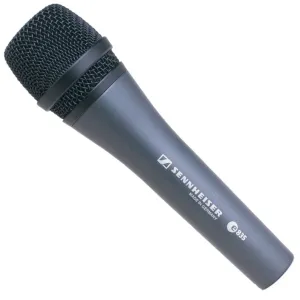Dynamic vs Condenser Microphones [Reader Question]
Feb 17, 2010This past week, one of my YouTube channel subscribers had a simple, but important question regarding microphones. He is building a home studio and already has an audio interface and some basic equipment, including a Sennhieser E835 vocal mic. In response to my suggestion of getting a large diaphragm condenser microphone, here is his question…
“I was wondering if it would make a huge difference in vocals. The E835 picks up a lot of everything in the room.. the AC, the PC; everything is really picky. Also it doesn’t have a “fat” sound, it seems very “skype-voice-like” if you know what i mean…”

Microphones 101
This is an important question to address and I’ll do it as briefly and clearly as I can. First of all, there are a few types of microphones available to you that use different technology to capture audio: dynamic, condenser, and ribbon mics; the first two of which I will address here.
The E835 mentioned above is a dynamic microphone, one commonly used on stage in live settings. It is a great microphone, one that I actually use in my band, that can take a lot of abuse from being dropped and “handled” during a live performance. That is where it shines.
Typically dynamic microphones are best used in live applications, but of course they have their place in the studio (miking guitar cabinets, drums, etc). While condenser mics are usually best suited for the studio. These types of microphones are very sensitive to audio waves, offering a realism and crispness to the recordings that many times isn’t there with a dynamic mic.
Go With A Condenser Mic
The most common studio microphone (and most worth your money at this point) is a simple large diaphragm condenser microphone. This will be your workhorse so to speak, capturing your vocals, acoustic guitars, drum overheads, room sounds, and even guitar amps. The way the microphone operates will inherently offer you a “fatter” and more realistic recording than a simple stage mic.
There are always exceptions to the rule (this is an “art” and not a “science”). For instance, the SM57 by Shure is typically used to mic guitar amps, but has been used with great success as a main vocal mic in the studio on majer label talent for years. It really just depends on the vocalist and the style of music. Nevertheless, my firm recommendation for home studio owners and musicians breaking into this remains the same: Spend $100 on a studio condenser microphone, use it like a maniac, and don’t look back.
Further Reading
For more information on microphones and how to mentally approach them in the studio, be sure to check out the microphone section in my new eBook: The #1 Rule of Home Recording. It’s completely free to download!
Discover The 6 Steps for Creating a
Radio-Ready Song from Scratch"
Enter Your Email Below To Receive The Free 17-page PDF,
"6 Steps To A Radio-Ready Song"
We hate SPAM. We will never sell your information, for any reason.

